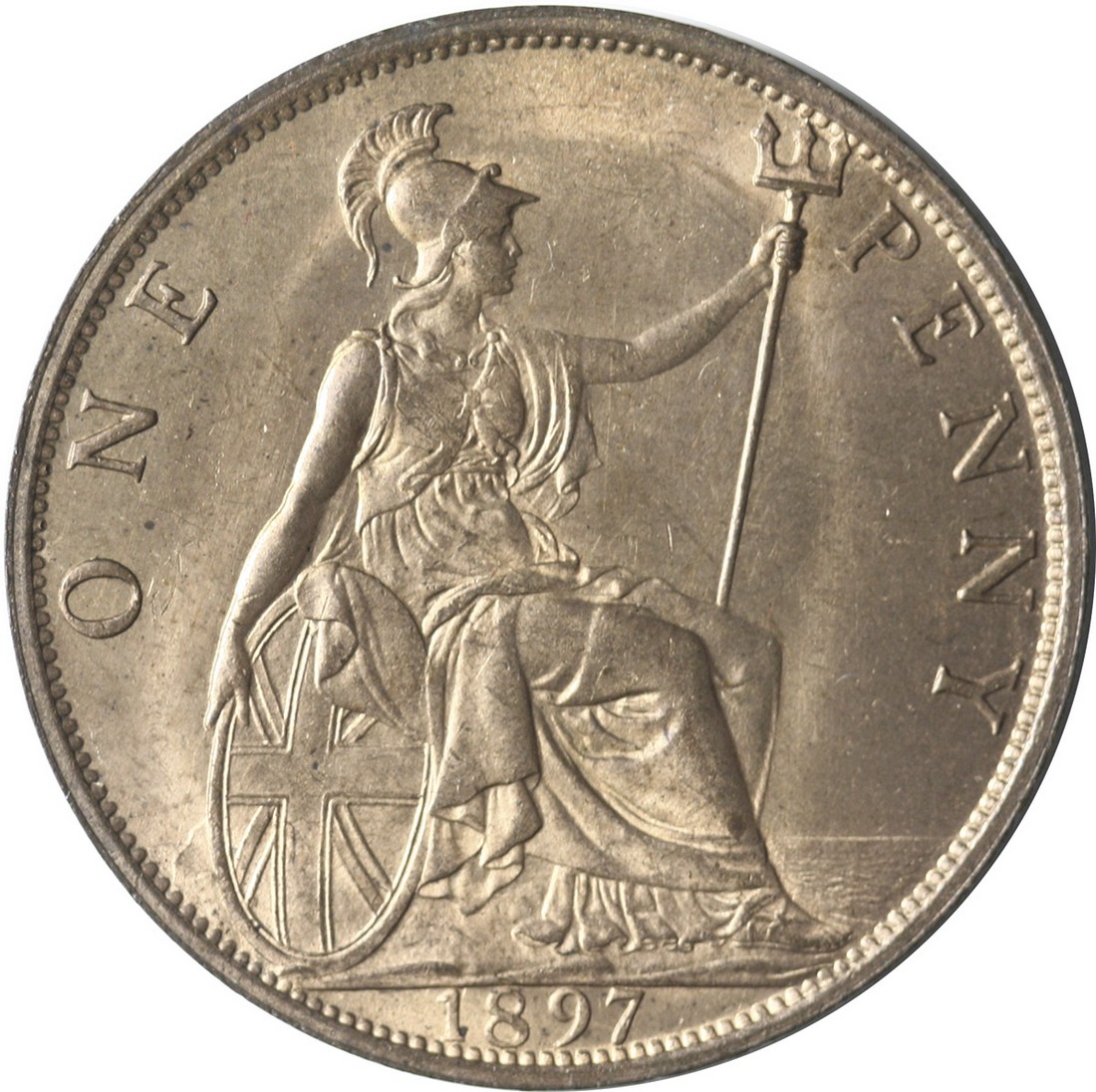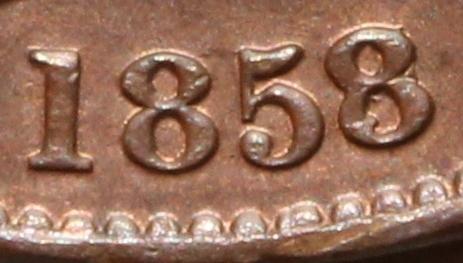|
|
The current range of books. Click the image above to see them on Amazon (printed and Kindle format). More info on coinpublications.com |
|
|


oldcopper
-
Content Count
611 -
Joined
-
Last visited
-
Days Won
15
Posts posted by oldcopper
-
-
1 hour ago, Paddy said:I dread to think! I was lucky if I could get 50p for one, so I guess Coincraft probably want £20+ ?
And that's without the original flip! They've just found a small parcel of them at the back of their basement that they never knew they had, squirrelled away many moons ago.....etc.
-
 1
1
-
-
9 hours ago, Rob said:Went to see part 1 of the British today with an advance list of potential box ticking lots.

After some brutal pruning I'm left with 32 lots and a pre-sale estimate of around 80K

Might have to conduct this auction in Turkish Lire
and many of the estimates are obvious teasers as well. Perhaps better to pop round the corner to Coincraft and pick up a very reasonable "getting harder and harder to find" 1977 crown in Unc or nearly so (with original plastic flip) for a bargain basement price of ....how much????!!!!!
-
 1
1
-
-
-
On 3/9/2024 at 10:38 AM, blakeyboy said:The only part of China we ever colonised was Hong Kong. So we didn't lose anything because of the above attitude. But it was a fair enough comment at the time - they were a very backward society compared to Britain, and the comment was made back in the days when people were honest and judged what they saw, not turning themselves inside out with political correctness. And most Chinese would have seemed ultra-compliant and subservient showing little free agency of thought,. to a large extent because their culture made them like that. And that type of ultra compliant culture continues to today. Look at Tianamen Square for instance where people tried to show freedom of thought and action. And let's face it, do you think British soldiers would run their tanks over protesters if they were told to?
But coming back to the point, it is apparent that the Han Chinese, the main ethnic group, feel they are superior, and it can be said that China is turning itself into an ethnostate. This can be seen in their mistreatment of other ethnicities/cultures eg the colonisation of Tibet, the enslavement and attempted breeding out of the Uighurs, and the replacement of Cantonese with Mandarin-speaking Han in positions of power in Hong Kong.
-
On 2/21/2024 at 6:43 AM, SilverAge3 said:Of course 90% or more of all the 1897 HT listings are in deed not HT, I'm just irritated how NGC makes matters worse. I did see a seller recently at least state an 1860 was mislabelled by NGC as beaded border.
1 hour ago, david.bordeaux said:Do you know why he died so young (42)? I think that's the normal higher tide 1mm variety.
-
 1
1
-
-
On 2/25/2024 at 5:08 AM, shagreen said:If it is a die crack the opened crack would result in a raised or convex feature on the coin. The picture looks more like lamination problems with the planchet "blistering" during its production. Lamination features typically reveal missing metal in contrast to raised metal from a crack
You may be right, but I've never really understood what is meant by the term "lamination" in terms of a coin's surface. In this case it would presumably mean partial flaking of metal from the flan on striking not caused by any irregularity in the die.
However, the P.1237 does show another similarly textured fissure on the left of the bust, stretching from the back of the King's head to the second G in Georgius. This can be seen on another example of the large crowned bust, the P.1220 lustrous copper example (lot 605, DNW Oct 2023). As this fissure is on more than one example, it has to be from a hairline die crack. Though I have not seen any other P.1237's with the complex fissuring to the right of Britannia shown in the example above.
-
 1
1
-
-
7 hours ago, SilverAge3 said:Can anyone explain what's going on under the lifted arm? Is this some lamination or annealing issue? I'm suspecting lamination flaw.
I am having issues showing much more of the coin due to file limitation constraint.
Looks like the product of a die crack. Here's a similar wiggly one on the recent P.1237 halfpenny sold DNW Oct 2023:

-
 1
1
-
-
On 1/20/2024 at 1:08 PM, DaveG38 said:Sometimes I wonder if I took my degree in Chemistry. Hypo is Sodium Thiosulphate, not Hypochlorite. Duuhhh!!
Bleach 'em, that's what I say! It is confusing though, but I've just googled it and an old name for sodium thiosulphate was "hyposulphite of soda" which is where the hypo comes from
Glad MT didn't mean mounted.....
-
 1
1
-
-
Sometimes the head/face can be quite sharp on the real ones. Here's one I used to own ex one of the CC collections, I think the Workman one.
-
 4
4
-
 1
1
-
-
-
Fascinating letter. I see the 58/3 described as 59/8 in the later edition. Never thought of that before - I wonder if that makes sense for Bramah's other 58/3 variety with the hump coming out of the left of the lower 8 and the vague straight mark in the middle right join of the 8. Normally overstriking give a stronger overstrike than understrike but I don't know if that's the case here if it really is 9/8.
Peck didn't put the 1858/6 variety in his Addenda to 2nd edition of 1967 (BNJ) which confirms he wasn't sure of it being a 6, as he says, or else he had submitted or finished his paper by the time of this correspondence.
Dave Craddock sold a D/U 1825 farthing several years ago now with a confirmatory letter from Peck, and that got into his 1967 article, so he was more certain about that one.
-
3 hours ago, PWA 1967 said:I believe freeman had a deal with a local bus station in the sixties were he bought them all at face value , then went through them and took to the bank himself.
Interesting!
-
1 hour ago, Paddy said:All the info I have is in the thread in the Wanted section of this forum. I can't seem to post a link to it, but if you go into Wanted it is on the first page - Bronze Coinage (2016).
I've got the 1985 version (as has everyone else). Is there much new stuff in the new edition?
As an aside, I'm impressed by Freeman's assertion in his intro that he had a collection of 60,000 Victorian pennies (acquired "randomly from circulation"). He would have collected these in the 1950's to early 60's presumably, and by then the 19th century Victorian pennies would only have made up a small proportion of circulating pennies with most remaining in very low grade. So say there were 10% Victorians left in circulation at that time, Freeman would have had to sift through 600K different pennies to weed out 60K Victorian ones.
So if he collected his pennies actively over a period of 15 years "from circulation" prior to his book coming out (printed mid-60's), that means he would have had to obtain 110 pennies EVERY DAY of those 15 years, each time a fresh batch, to sift out on average the 11 Victorian ones.
Perhaps a more likely scenario was that he was able to buy large accumulations of pennies destined for scrap from the bank, but he would still have to get 600 thousand to sift through for his 10% Victorians, and give back the remainder to the bank.That's assuming the proportion in circulation by then was even as much as 10%. Most would presumably have been melted down or discarded due to wear and age before the massive 20th century issues.
-
 2
2
-
-
2 hours ago, secret santa said:Just noted as "extremely rare" with no valuations.
Thanks - at least it's there. You probably saw this but Spink missed one a few weeks ago in a 3 coin lot - the bidders didn't - it went for £2800 hammer.
-
 1
1
-
-
1 hour ago, secret santa said:Spink's Coins of England 2024 has finally included my proposed penny additions of 1847 Medusa, 1858 Large Rose (although they have mysteriously duplicated the entry), 1862 over 1, 1862 VIGTORIA and 1863 open 3.
Do you know their pricing for the Medusa?
-
On 11/27/2023 at 10:26 AM, Rob said:Is she hard of hearing?
"They're on majestic plains" was it?
-
On 10/27/2023 at 5:19 PM, Denarius said:Thanks. Some reasonable prices there - nothing went too mad.
-
Talking of which, it's been over a week since the Baldwins auction and they still haven't got their prices realised up. Be interested to see how that 19th century copper went.
-
1 hour ago, Denarius said:Is there a definition of the 1953 V.I.P. proof set, in terms of the absolute contents, die pairings, etc ? Was it supplied in a special box labelled V.I.P. ?
What was the mintage ?
Or is it the stuff of myth and legend ?
DNW sold a 1953 "VIP" proof set in Sep 2013, but it was a special set, with a toothed border penny and a farthing not previously known in proof. Nice box as well. Apart from that I've never seen a set so described.
-
 1
1
-
-
18 hours ago, PWA 1967 said:I must be missing something on these Crowns i know nothing about.
One was in the Baldwin sale LOT 538 PF67 CAMEO £500 and was unsold without a bid ,so why someone would pay £6K for one a grade less i have no idea 😀.
More i think about it and although still expensive maybe it was a 1953 VIP proof from the set and people knew the indicators which i have been told before are different ,like the Farthing and penny.
I dont have a clue about crowns or silver but the only explanation i can come up with and although still expensive seems more reasonable for a crown collector who has know interest in the rest of the set and will be very few sold individually.
Never noticed the tiny initials EF and CT above two of the shields before. Seems to be a general feature checking out other 1953 proof crowns, and expect it's explained in the reference books. Perhaps two people thought they were a special feature like the ON on one or two of the 1951 crowns, so went stratospheric!!
Edit - it's the initials of the two co-designers according to Sovereign Rarities website. I live and learn.
-
12 hours ago, Rob said:The detail doesn't look sharp enough for me either, but photography can be a nightmare with proofs. I bought some pattern halfpennies in last week's Noonans sale. One or two look like they've been badly abused in my images, yet in hand they are brilliant with not a blemish to be seen.
I thought vice versa for quite a few of them!
-
I should add that finding a 1698 DIL halfpenny in any condition above Fine is probably impossible. Peck's plate coin (BM) is almost certainly the best by far.
-
The best ones I've noticed are
(1) Nicholson (Colin Cooke 2004); Pywell-Philips, Spink 2018; GVF
and
(2) G. Bates, DNW, 2018, similar grade, some lustre.
-
3 hours ago, blakeyboy said:I'm not the most left wing of blokes, but this is fun.
If they scrap the Mancunian section, and don't link properly in London, they'll look like twats.
If they say it's all going ahead and it turns out all the doubt was a big Conference Setup, they'll look like twats.
It doesn't even get begin or end anywhere near a mainline London station like Euston. Apparently it can only go to Stratford, 45 minutes trip from Euston. So the much vaunted rapid journey time, which is how it was sold to us, is a farce. It should have been kicked into the long grass a long time ago. There was a chance to strangle it in 2019 but Johnson for some reason wanted it to continue.
Still ,could anyone brief me on Labour's opposition to HS2 as its projected cost has risen from the original civil service back of a beer mat estimate of 25 billion (from memory) to over 100 billion. Not a squawk as far as I'm aware. Where is the opposition in this country?
And the UK is 2.5 trillion pounds in debt. So how can we even afford it? Oh yes, more borrowing.
 Coinpublications.com
Coinpublications.com





1831 Sixpence Proof Mintage Question
in British Coin Related Discussions & Enquiries
Posted · Edited by oldcopper
There's the stated mintage of the 1831 proof sets, which is given as 120 sets. How reliable or where this number is from I don't know, but that's always the figure used in catalogues, annuals etc. I should also add it's often accompanied by the prefix circa, which makes it look more like a later estimate, so it might not even be official. Actual records of early 19th century proof set numbers haven't survived or were never made as far as I know.
It's thought an unspecified number of extra proofs were also minted, often late strikings in some cases especially for the 1839 set, how many per denomination not known, and if so, for the William proofs the mintage would have been higher than 120. There are also the non-proof-set varieties like the 1831 milled edge sixpence mentioned and the upright bronzed proofs for example, and each 1831 denomination has extra proof varieties.